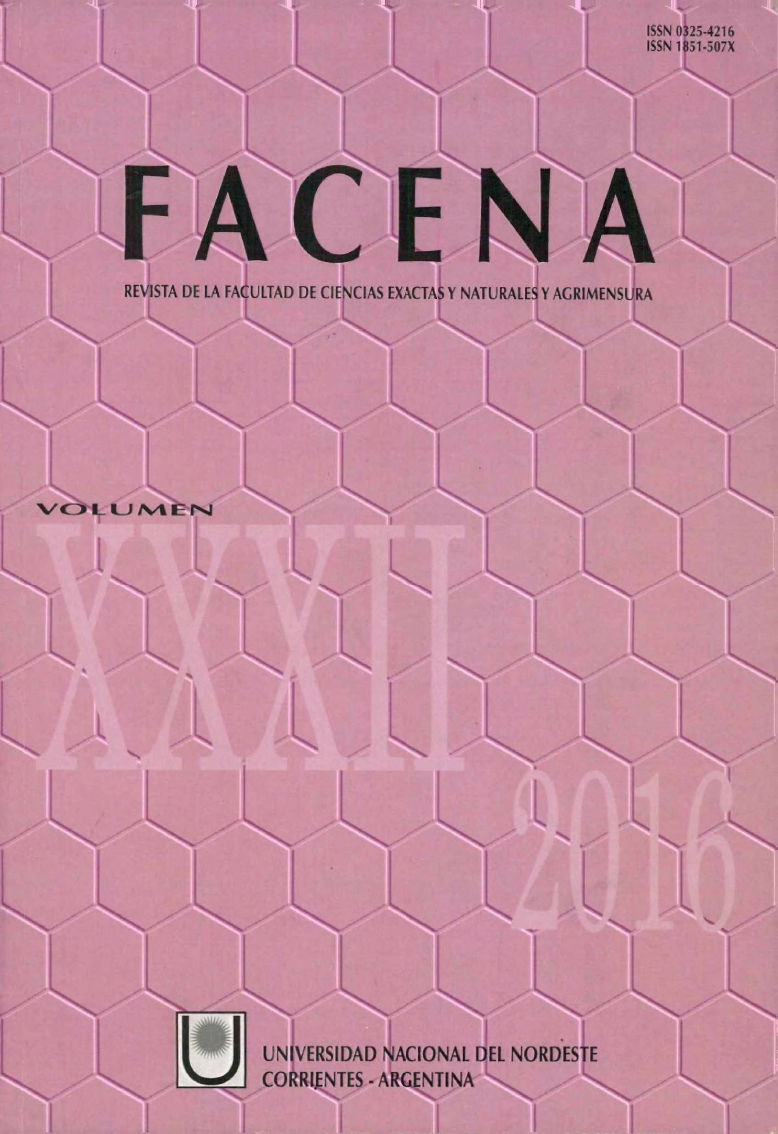Contenido mineral de jugos cítricos provenientes del nordeste argentino
DOI:
https://doi.org/10.30972/fac.3207708Keywords:
Orange, Lemon, Lime Rangpur, Principal component analysisAbstract
The objectives of this study were to quantify and compare the content of elements in orange juice, lemon juice and Rangpur lime juice from the Northeast Argentina. Twelve elements were determined, including five macroelements (K, P, Ca, Mg and S) and four trace elements (Cr, Cu, Mn, and Zn) using an optical emission spectrometer inductively coupled plasma (ICP-OES). Lemon juice showed a higher content of macro and micro elements, than Rangpur lime juice and orange juice, re- spectively. The Principal Component Analysis allowed observing the formation of two groups, one consisting of lemon juice and another orange juice and lime Rangpur. The similarity of the orange juice and lime Rangpur juice, was higher than the content of minority elements.
Downloads
References
Balzarini, M.G.; L. González, M. Tablada; F. Casanoves; J.A. Di Rienzo y C.W. Robledo, 2008. InfoStat. Manual del Usuario. Universidad Nacional de Córdoba, Argentina.
Cole, L. y P. Kramer, 2016. Vitamins and minerals. Pp: 165-175. In: Human Physiology, Biochemistry and basic medicine. Academic Press, San Diego, Estados Unidos.
Ekholm, P.; H. Reinivuo; P. Mattila; H. Pakkala; J. Koponen; A. Happonen; J. Hellstróm y M. Ovaskainen, 2007. Changes in the mineral and trace element contents of cereals, fruits and vegetables in Finland. Journal of Food Composition and Analysis, 20 (6): 487-495.
Evans, P. y B. Halliwell, 2001. Micronutrients: Oxidant/antioxidant status. British Journal of Nutrition, 85: 67-74.
Human Vitamin and Mineral Requirements. Report of a Joint FAO/OMS Expert Consultation, 2001. Bangkok, Thailand.
La Actividad Citrícola Argentina. The Argentine Citrus Industry. FEDERCITRUS, 2106.
Ladaniya, M.S.. 2008. Citrus fruit: Biology, technology and evaluation. Academic Press, San Diego, Estados Unidos.
Martin, G.J.; J.B. Fournier; P. Allain; Y. Mauras y L. Aguile, 1997. Optimization of analytical methods for origin assessment of orange juices II. ICP-MS determination of trace and ultra-trace elements. Analusius, 25: 7-13.
Pellerano, R.G.; S. Mazza; R.A. Marigliano y E.J. Marchevsky, 2008. Multielement analysis of argentinean lemon juices by instrumental neutronic activation analysis and their classification according to geographical origin. Journal of Agriad tural and Food Chemistiy, 56: 5222-5225.
Rudge de Moraes Barros, H.; T.A. Pinto de Castro Ferreira y M.I. Genovese, 2012. Antioxidant capacity and mineral content of pulp and peel from commercial cultivars of citrus from Brazil. Food Chemistry, 134: 1892-1898.
Sanchf.z-Moreno, C.; S. De Pascual-Teresa; B. De Ancos y M. Cano, 2006. Nutritional Values of Fruits. Pp 29-44. In: Hui, Y.H. (ed.): Handbook of Fruits and Fruit Processing. Blackwell Publish- ing, Oxford. Reino Unido.
Simpkins, W.A.; H. LOUIE; M. Wub; M. Harrison y D. Goldberg, 2000. Trace elements in Australian orange juice and other producís. Food Chemistry, 71: 423-433.
Xu, G.; D. Liu; J. Chen; X. Ye; Y. Maa y J. Shi, 2008. Juice components and antioxidant capacity of citrus varieties cultivated in China. Food Chemistry, 106: 545-551.








